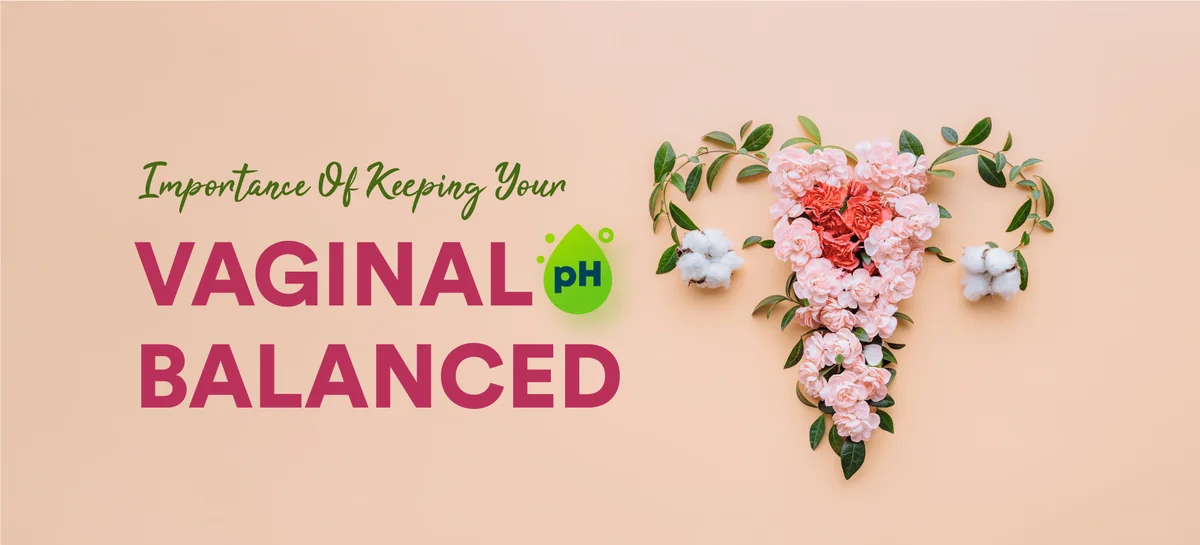- Home
- Blog
- Women Care
Three Reasons Why You Should Maintain The pH Of Your Vagina
Women Care
Three Reasons Why You Should Maintain The pH Of Your Vagina
By Apollo 24|7, Published on- 18 April 2023, Updated on -19 June 2023
Share this article
0
0 like

The pH indicates the alkalinity or acidity of a substance. The pH scale ranges between 0 and 14 with a pH measurement of more than 7 indicating that a substance is basic (alkaline), while a pH of less than 7 indicates acidity. You’ll be amazed to know that various parts of your body have different pH. For instance, human blood is naturally alkaline but the stomach and vagina have acidic pH. Furthermore, your vagina's pH level - whether it's basic or acidic - can be a major indicator of its health. Read on to learn more about what are healthy pH levels for your vagina and how to correct any imbalances.
What is a Normal Vaginal pH?
Normal pH levels of a vagina are moderately acidic and range from 3.8 to 4.5. However, this normal range of vaginal pH can vary slightly depending on the stage of life. For instance, during the reproductive age (between the ages of 15 and 49), normal vaginal pH is below 4.5. In the case of life stages after menopause and before menstruation, the normal pH is typically over 4.5.
Why is it Important to Maintain Vaginal pH Balance?
Elevated vaginal pH can put you at an increased risk of developing infections. A high pH level can lead to several issues like bacterial vaginosis, yeast infections, sexually transmitted diseases (STDs) and urinary tract infections (UTIs). Here is a list of certain conditions that can develop due to high vaginal pH levels.
1. Bacterial Vaginosis
This condition occurs due to a change in your vagina's bacterial balance and excess growth of harmful microorganisms. It results in a foul odour, itching, and yellow or greyish discharge. If left untreated, it can make you susceptible to herpes, HIV, and human papillomavirus (HPV).
2. Trichomoniasis
It is a sexually transmitted disease caused by a parasite and is linked to enhanced HIV transmission and pelvic inflammatory disease. Its symptoms include a burning sensation, itching, and a smelly yellowish discharge.
3. Vaginal Yeast Infections
These infections occur when the fungus candida, which is usually naturally found in your vagina, overcomes the healthy bacterial count. They lead to irritation, itching and pain in the vagina.
In addition to these problems, a high vaginal pH level also increases your risk of developing UTIs and they have been associated with premature birth and infertility. A low vaginal pH doesn’t typically cause any disease. However, too much acidity can reduce your fertility as sperms prefer an alkaline environment. The optimal pH for a sperm to swim is from 7 to 8.5. During sex, the vaginal pH rises temporarily to transform the normally acidic environment into slightly alkaline to keep the sperm thriving until it can reach the egg.
For more queries on the necessity of maintaining vaginal pH balance,
Causes of an Unbalanced Vaginal pH?
An unbalanced vaginal pH can be caused by one or more of the following reasons:
1. Unprotected Sex
Semen is alkaline, which can disturb your vagina’s pH balance and encourage the growth of harmful bacteria.
2. Antibiotics
Most antibiotics not only kill the disease-causing bacteria but also eliminate the good bacteria needed to maintain a healthy, slightly acidic vaginal pH.
3. Douching
It refers to a widely popular practice of regularly washing the vagina with a mixture of water and iodine, vinegar, or baking soda. This can increase the pH level of your vagina and boost the growth of harmful bacteria.
4. Menstruation
Menstrual blood is slightly alkaline and can increase your vaginal pH levels. When you are menstruating, the blood absorbed by a pad or tampon stays in place for a while, increasing the pH of your vagina.
Symptoms of an Unbalanced Vaginal pH Level
Imbalanced vaginal pH can result in:
- Vaginal itching
- A foul smell
- A burning sensation during urination
- An unusual grey, white, or green discharge
How to Maintain Vaginal pH Balance?
You can take the following measures to maintain the pH balance of your vagina consistently:
1. Use a Condom
Using a condom during intercourse not only protects you against STDs but also prevents alkaline semen from unbalancing your vaginal pH levels.
2. Take probiotics
Taking probiotics can prove to be quite helpful in restoring the balance of healthy bacteria in your body, including the vagina.
3. Don’t Douche
Your vagina is designed to naturally self-clean. Washing just the outside of the vagina with water and a mild soap is enough to ensure good hygiene. If you are concerned about odour, then consult with a doctor instead of douching.
4. Consume Yoghurt
Yoghurt is a major source of healthy bacterial species called lactobacillus, which can help maintain vaginal pH balance.
Regular appointments with your obstetrician-gynaecologist for exams can help you maintain your vaginal health and detect any problems on time. For more information,
Consult An Apollo Gynaecologist
Medically reviewed by Dr Sonia Bhatt.
Services
Women Care
Leave Comment
Services
Recommended for you

Women Care
7 Tips To Manage PCOS Acne
Acne caused by polycystic ovary syndrome (PCOS) is a common skin problem among women. Not to mention, keeping it under control is a major struggle. Explore useful tips on how to avoid breakouts in PCOS through this blog.

Women Care
Looking For Safest Ways To Delay Your Periods? Try These Methods!
Whether it’s for a medical reason, an upcoming event or a vacation, the thought of delaying periods has crossed the mind of every woman at some point or the other. With the advice of a doctor, a few hormonal contraceptives can be used to delay menstrual cycles.

Women Care
Dear Women, This Is Exactly Why You Can’t Go Low On Potassium!
This article focuses on determining the daily requirements for potassium in women and the negative effects of taking too much or too little of it.
Subscribe
Sign up for our free Health Library Daily Newsletter
Get doctor-approved health tips, news, and more.


